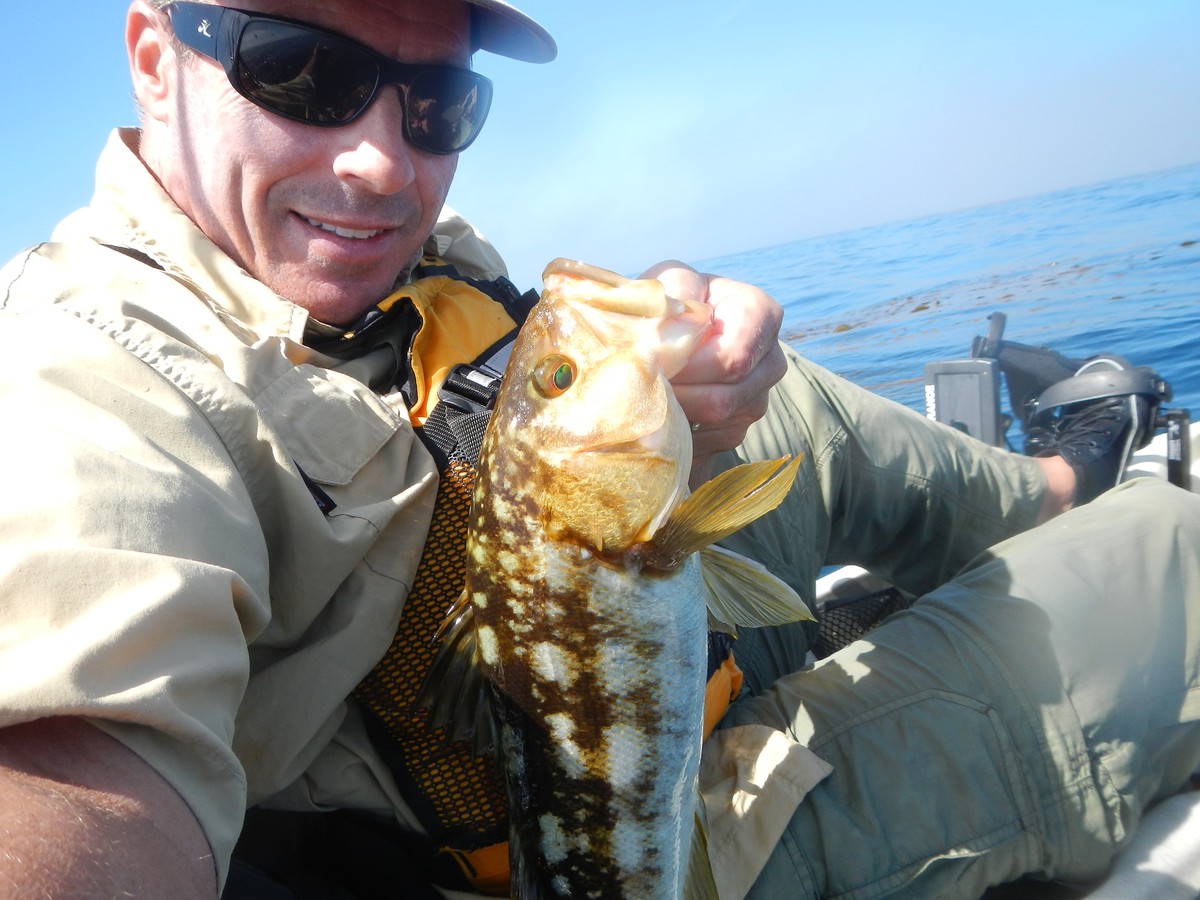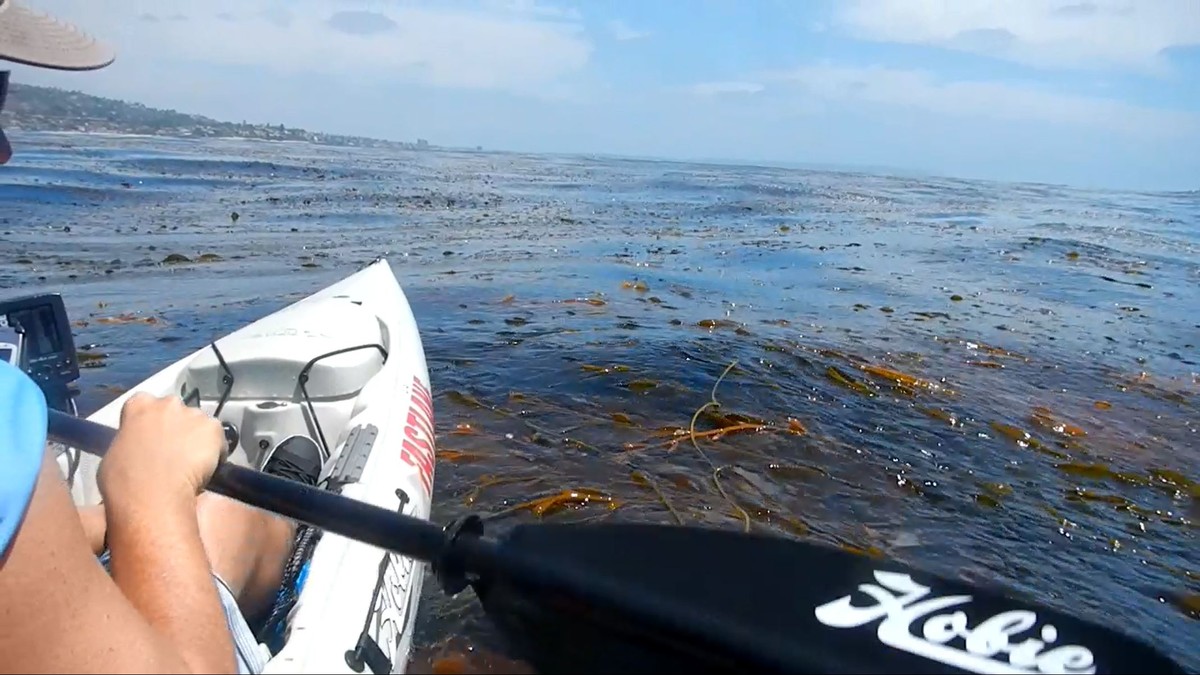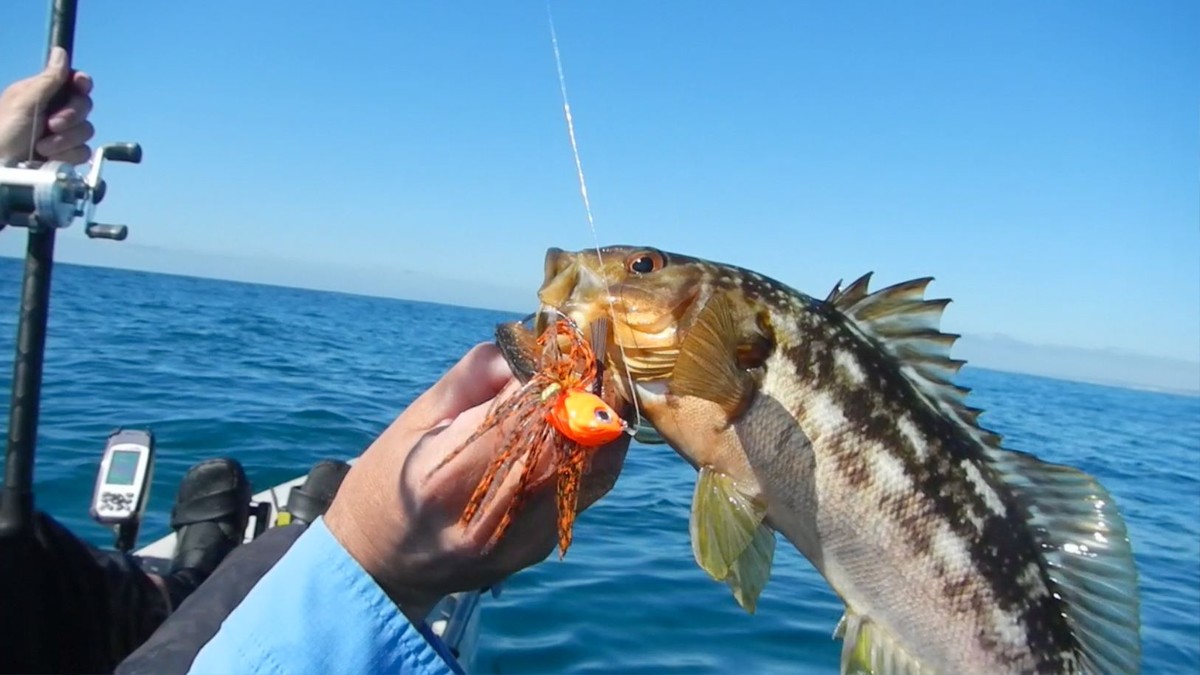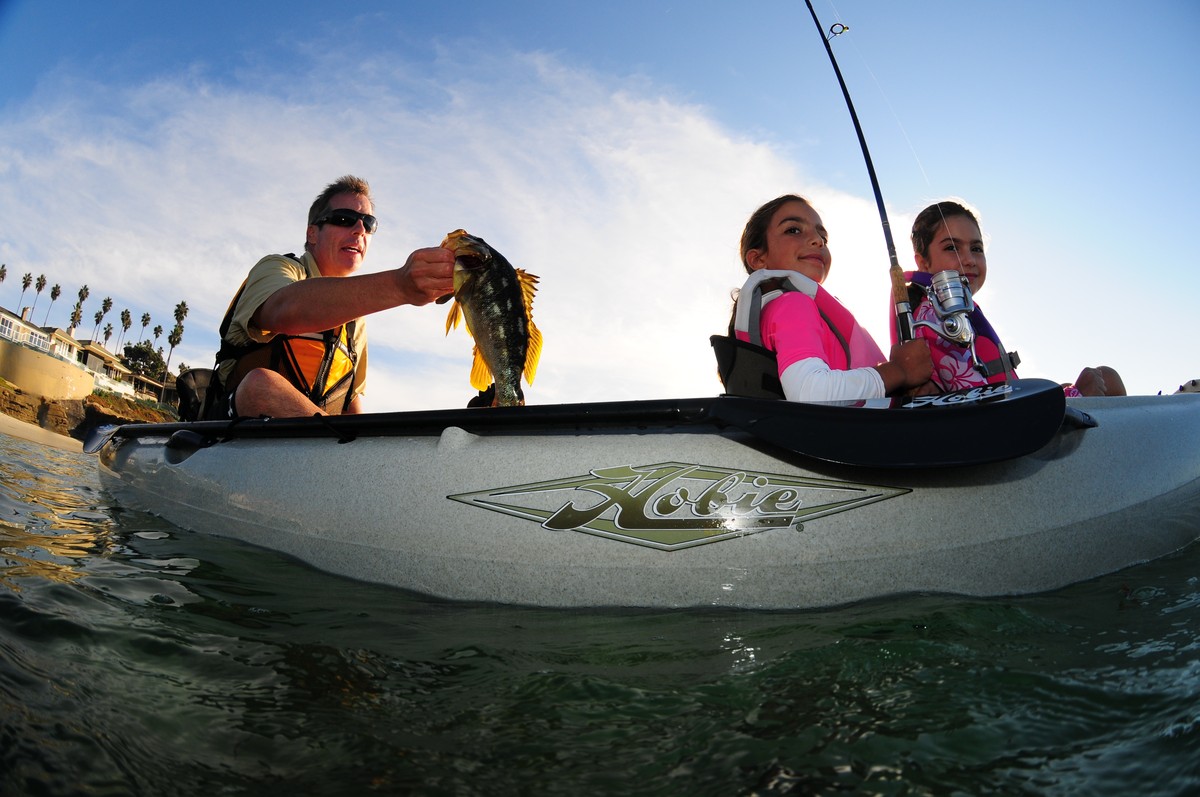
One of the most popular game fish to target from a kayak in Southern California’s inshore ocean waters is the calico bass, also known as the kelp bass. Targeting these hard fighting aggressive fish from a kayak can be very simple and rewarding. You can even leave the electronics and live bait tanks behind because all that you’ll really need is a single medium action bass rod with a handful of soft plastic baits – and just head to your local kelp bed!
Easily recognized by their bronze checkered topside, calico bass are the most numerous fish inhabiting the extensive kelp forests of Southern California. During warmer summer months they can be very willing to bite and an experienced angler in a July hot bite can catch and release dozens of calico bass in just a couple of hours.
As a designated sport-fish in California, calico bass are protected from any commercial fishing, and the calico bass populations remain fairly strong up and down the coast. They can grow to over 10 pounds, and large ‘breeder’ bass over three pounds are always released by conservation-minded sport fishermen when caught as the calico’s growth rate is very slow. A newly reduced bag limit of five fish and a longer minimum size of 14 inches for a ‘legal’ bass will help to improve the local calico bass populations for our enjoyment and generations to come.

Areas
Calicos can be found anywhere there is structure from 5 to 125 feet deep – whether that’s around kelp beds, over rocky reefs, or scattered around the shallower churning ‘boiler rocks’ along our beautiful coastline. Hotspots are usually any place that has a kelp bed with nearby deeper water and a regular current. In the San Diego area, the Point Loma area and La Jolla kelp get most of the attention, featuring square miles of kelp beds and excellent structure spots inside the kelp lines. Anywhere the current is pulling kelp stringers toward shore from deeper water, the calicos like to use the kelp as cover when ambushing baitfish from the edge of the kelp lines.
Starting in July, most all Southern California half-day party boats will target calico bass and other surface fish around our local kelp beds. Scoping out the likely bass havens from a charter boat on a half-day fishing trip can really build confidence in techniques and help you get acquainted with proven fishing spots. If you are just getting into the sport, take special note of the techniques and equipment used by regulars onboard these boats. They usually have the right gear, and clearly are catching the vast majority of the fish – they are hard to miss.
In my kayak when heading out into my usual kelp filled fishing areas, I always keep an eye out for birds like terns and seagulls or baitfish like smelt or sardines, which can help pinpoint the most productive areas of the kelp bed at the moment – water that is full of life. When the kelp is thick on the water surface, you may even hear pops and splashes of bass feeding on schools of krill or small baitfish in the thick kelp cover. This is a good area to start your days work.

Techniques
Much like freshwater bass fishing, the most exciting way to catch calico bass involves using artificial baits. This allows you to feel a strike and set the hook instantly on a fish and get the adrenaline rush we all love. While live baits like sardines, anchovies, or even mackerel are very effective, there’s an art to presenting a swimbait to these fish and unleashing the most powerful and aggressive strike of any fish their size, a trait that keeps them at the top of anglers’ target lists.
Being extremely quiet and agile in and around the kelp forests gives a huge advantage to kayak anglers targeting the kelp-loving calicos. One of the most effective techniques for covering water is to pedal up current along areas of kelp stringers, casting up current and carefully landing your casts within inches of floating lines of kelp, allowing your bait to drop vertically along the edge of the kelp stalk. Sometimes the fish are holding in the top 15 feet of water, other times you may need to let the bait drop down 25 or 30 feet or more. Aggressive calicos will viciously slam a falling bait during the drop, and very quickly you’ll swing the rod to set the hook on the fish. If you miss the hookset, let the bait continue falling as calicos often travel in packs and another fish may quickly grab his buddy’s missed meal.
In cases that you don’t get a strike, wind the bait back to the kayak with a steady retrieve, careful to try and avoid crossing any kelp stringers when possible – this is a big part of the challenge of fishing heavy cover. Calicos will even pop out and ambush your bait next to your kayak, right at your rod tip, so stay alert and remember to put that next cast right next to another kelp stringer.
When a fish is hooked and in the kelp, keep pressure on them as often their aerodynamic shape and slick skin will work to your advantage in allowing you to wrestle the fish out of the cover. This is why we fish heavier lines, and braided lines in the kelp beds.

Gear
Targeting calicos, I like to use an 8-foot rod with a baitcasting reel like the Shimano Calcutta 200 filled with 30- to 50-pound braided line and a short (4-foot) topshot of 30-pound fluorocarbon leader for abrasion resistance and stealth. There are many lures that will work, from creature-like jig baits to slugs, but in general I prefer casting a 4- or 5-inch soft plastic swimbait on a lead head, particularly a sardine-like swim bait with a weedless jighead.
A couple of companies that specialize in soft baits for calico fishing are Big Hammer and Fish Trap for example. These baits are affordable and widely available at any store selling tackle, and since these will get torn up after a few fish, be sure to bring a bunch of them. Coupling these swimbaits with a weedless leadhead like the Warbait Slayer head from ¼-ounce to ½-ounce will help keep you from hooking the kelp in most situations. Some of the go-to colors are browns or reds in lower light, like the ‘Calico Hunter’ – to blues and green colors like the ‘Chovy’ color in sunshine or brighter days.
With the tips above you will improve your catch. Keep it simple by hauling minimal gear, and get out there while the calico bass bite is on!
Check back weekly for new videos and stories by the 2016 Hobie Fishing Top Guns.
